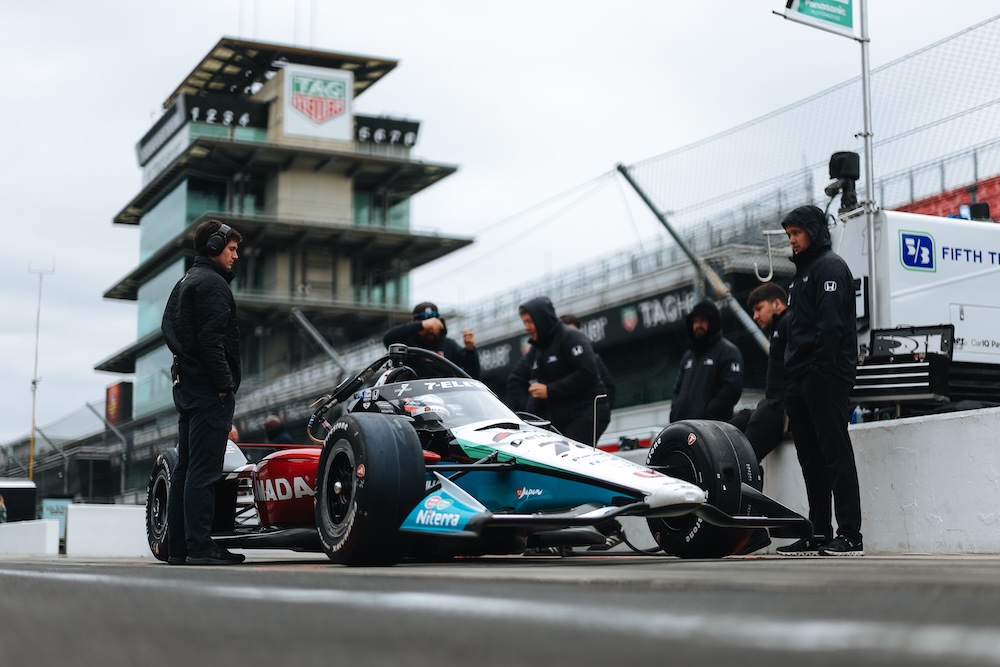The IndyCar Series used its recent test on the Indianapolis Motor Speedway’s 2.5-mile oval to gather feedback and data on two technical changes being considered for its current and future car.
Evaluated by Ed Carpenter Racing’s Alexander Rossi, the 2016 Indy 500 winner, in the No. 20 Chevy, and Rahal Letterman Lanigan Racing’s Takuma Sato, winner of the 2017 and 2020 Indy 500s, in the No. 75 Honda, a different spec brake package from the U.S.-based Performance Friction Corporation (PFC) was tried along with two unique spec dampers supplied by the Swedish company Ohlins.
IndyCar’s brake specification has made use of a one-size-fits-all approach with calipers, discs, and pads that are used on road courses, street courses, and three different types of ovals. But that’s expected to change with a custom oval caliper for 2026 that’s smaller, lighter, and provides improved response.
As fans have witnessed in recent Indy 500s, some drivers have struggled to slow or control their cars coming off of Turn 4 as they decelerate from over 200mph to 60mph on entry to pit lane. Evaluating a downsized brake caliper which grips faster – after drivers spend extended periods running around big ovals without using the brakes – was raised with PFC. The package run by the two teams produced favorable reactions, as drivers reported having solid brake pedals and immediate responses upon entering pit lane.
“We have a brake package right now, from a caliper standpoint, that is consistent throughout the season. What we’ve started to look at is, there’s an opportunity to really enhance that package when it comes to ovals,” Mark Sibla, IndyCar’s Sr. VP of competition and operations, told RACER.
“There’s an opportunity to a get a little bit of weight out, but also impact some things that just will make the performance of those a little bit better as far as what we’re looking for.
“PFC was in attendance and they brought a couple of new units that we hadn’t yet tested. The teams went out with their current packages – just as you would with any test; start with what you know – and then they would start to move to variations on this new caliper package, and we got what was just really, really good feedback from both of the drivers. It seemed very, very positive, the direction of what PFC had brought and how it was performing.”
IndyCar has made use of six-piston calipers at the front and the back of the Dallara DW12 since its debut, and with where the 2026 oval package is headed, a reduction to four pistons at the rear is anticipated.
